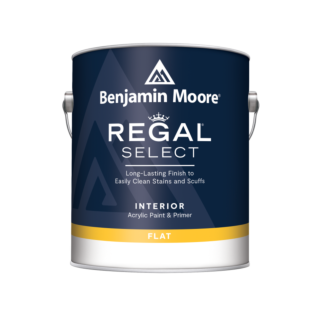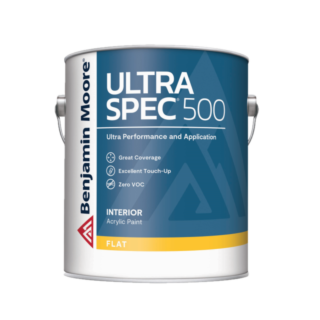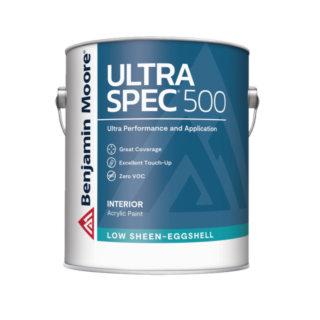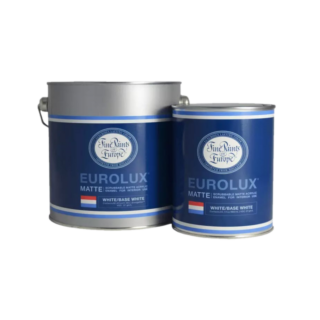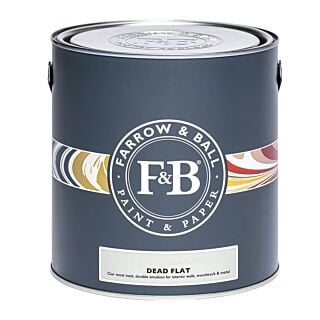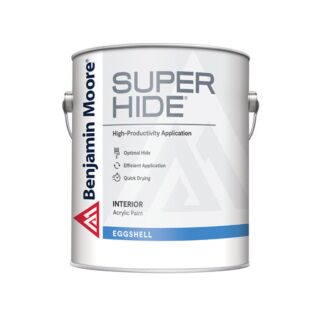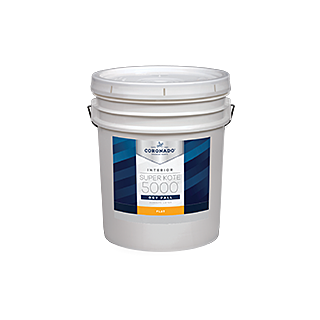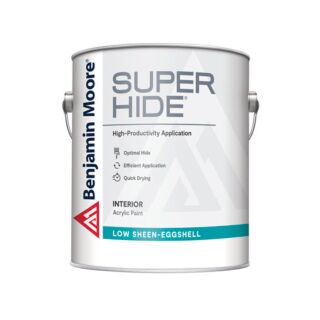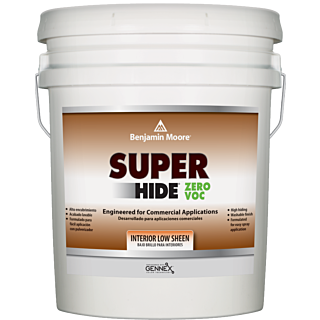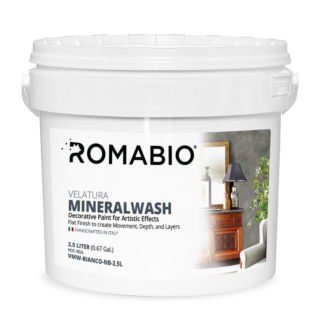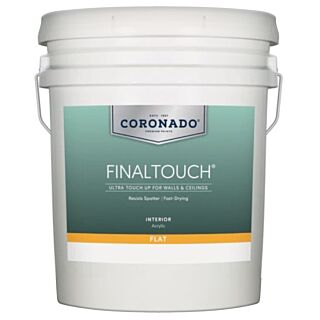Ceiling Paint
 Curator Irish Design Collection A5 Color Sample Swatch (8" x 6" Card) SKU: CURPANELAs low as $2.00each
Curator Irish Design Collection A5 Color Sample Swatch (8" x 6" Card) SKU: CURPANELAs low as $2.00each
Ceiling Paint at Ring's End
When people are painting a house, they tend to overlook ceiling paint. Ceiling paint is a necessary paint for the interior of your home! A properly painted ceiling can make or break the feeling in a room. It can also help guests overlook ant minor imperfections in the ceiling itself.
If you're gearing up to start a new painting project, don't forget about ceiling paint! Learn everything you need to know about ceiling paint in our handy guide!
Choosing the Right Ceiling Paints for Your Home
Being that most rooms are shaped like a box, you'd think that people would pay more attention to the ceiling. The ceiling makes up one-sixth of any room, after all. However, the average ceiling receives nothing more than a coat of white paint. While white ceiling paint may be popular, it isn't the only option you have.
Keep reading to learn more about the options you have when it comes to ceiling paints. You might be surprised to find that classic white paint isn't your only option!
Choosing the Right White
Since white is the most common choice for ceilings, we're going to start there. Nearly every ceiling paint job you'll see in new or manufactured homes will be white. If you look up, you're likely to see a white ceiling, as well. What you may not notice at first are the little undertones in the paint.
Not all white paints are made equally. Many of them have a unique look due to the other colors in their formula. "Ceiling white" tends to be a very bright white, but when you look at the different options for ceiling white paint you'll see that they look different from one another. This is because nearly all white paints will have a different makeup and undertone.
If you're painting a ceiling in a room that has cool wall paint, you can normally find a ceiling paint to compliment it. The same can be said of cooler rooms. Many ceiling paint options will include a tinge of blue or yellow to help it match the room it's in.
So why is white the most popular option? Well, that's because of the way that a white ceiling affects the way a room is perceived. If the walls of a room are a crisp, dark color, then a white ceiling can offset them. Alternatively, if the walls are a light color, a white ceiling opens the space even more! It can also help to promote the illusion of more ambient light in a room. White ceiling paint is a classic for a reason.
Matching Your Ceiling Paint to Your Wall Paint
Depending on the room you're in, you may decide to paint the ceiling the same color as the walls. This works particularly well in small rooms, like the bathroom. If the bathroom ceiling is the same color as the walls, it can evoke a soothing, restful mood. This is especially well received in bathrooms.
If you decide to match your ceiling paint color with your walls, you're going to want to have the paint mixed properly. A ceiling is almost always in shadow. Therefore, the best ceiling paint color for matching walls will be a lighter shade of the wall color. Generally, you'll want the ratio to be about 80% white paint to 20% colored paint. This will help you achieve the most complementary color that's similar to the wall.
What are the overall benefits of a colored ceiling? Well, as we said before, the room will feel more restful and soothing in a small space. However, the benefits carry over to rooms with oddly shaped or angled ceilings. By matching wall color to ceiling color you unify the room. This does well in rooms where the entire ceiling isn't flat, or the ceilings are lofted. Entire rooms that are painted in the same color feel more intimate.
The last benefit of having a single-colored room is the emphasis on fixtures and furniture that comes with it. If your ceiling and your walls are the same color, guests are more likely to focus on the other details in the room, as the surfaces blend with one another.
Contrasting Ceiling Paint with Your Wall Paint
If you want the most dramatic room that you can create, selecting a ceiling paint that's different from your wall paint (but not white) will do the trick. Generally, the rule for ceiling paint is to select a light color. You can break that rule for the most impact when selecting a ceiling paint if you so choose to.
Paint colors that make the biggest statement tend to be dark in color, and they make the room feel more closed in. Try using grey, pink, or blue if you want to make an impression, as these colors are rarely seen.
Is There Anything Other Than Flat Ceiling Paint?
Ceiling paint almost always comes in a flat finish. This is because of the nature of flat paint. It goes on easily and helps to hide minor surface imperfections in the ceiling itself. Nearly all ceilings have small imperfections, they can't be avoided. If you want to paint your ceiling in a different finish, the surface imperfections have to be almost nonexistent. If not, they'll be easily seen using any finish other than flat.
A semi-gloss or high gloss ceiling paint will have more sheen than a flat ceiling paint will. Because more light reflects off of these finishes, they show the imperfections in the surface more readily. When choosing ceiling paints, most people will wish you good luck should you attempt to use high gloss. Semi-gloss finish, matte finish, and eggshell finish are more readily acceptable, as they'll show fewer issues in the surface itself.
Another reason that flat paint is preferred is due to the fact that it applies easily. Most flat ceiling paint can be covered in one coat, whereas other finishes will require two coats. In some cases, they may even require three coats to achieve the look that you desire. Flat paint is the best paint according to many, making it the regular paint of choice for professionals and DIY'ers.
Ceiling Paint Formulas
Most ceiling paints that you'll find on the market are going to be formulated the same way. They'll be a waterborne, also known as latex, paint. There are a number of reasons as to why a flat finish, latex paint is the best option.
Latex Ceiling Paint
Latex paint has a number of advantages, making it the best ceiling paint for your next paint job. Read about the advantages below:
-
A latex paint with a flat finish normally only requires one coat to cover the ceiling
-
Latex paints are thicker than other paints, meaning that they stick to surfaces better
-
Flat latex paints are fast-drying, helping to reduce drips when working with it
-
Latex paint allows for a smooth application
If you're shopping for ceiling paint, latex paint is the best option that you have. We can help you pick the right latex ceiling paint to create the perfect feeling room in your home!
Simple Steps to Paint Your Ceiling
If you're looking to begin a ceiling painting project, check out the steps below to get started.
Step 1: Determine the Color Paint You Want
Pick the color of your ceiling paint based on our recommendations above. If you're trying to narrow it down between a few options, don't worry. We offer paint samples in-store. Simply let us know what paints you are thinking about, and we can get samples ready for you on the same day!
Remember, a dark ceiling is bold, a light ceiling opens up the room, and a ceiling that's the same color as the walls is good for small rooms, like the bathroom.
Step 2: Pick Up All of Your Supplies
After you've chosen your paint color, come by Ring's End and get the right color for your ceiling. While you're here, be sure to pick up all of the supplies that you might need. Paint stirrers, paint rollers, and drop cloths will all be necessary to make the job as easy as possible. While ceiling paint doesn't drip most of the time, it can still happen, so be sure to protect your furniture and floors.
Step 3: Protect Your Belongings and Prep the Ceiling
As mentioned before, you'll want to protect your furniture by covering it or removing it from the room. Additionally, it's a good idea to prep the ceiling ahead of time. This includes removing fixtures that may get in the way, and masking the trim at the top of the walls. If you have any cracks in the ceiling, now is a good time to fill them with spackle. Most importantly, make sure the ceiling is clean. Paint and primer will have a hard time adhering to a dirty ceiling. If there's any dust or cobwebs, make sure they're completely removed before starting.
Step 4: Prime the Ceiling
Taking your primer, begin to prime the ceiling. Primer is going to be the most efficient surface for ceiling paint to stick to. Primer should be applied according to the manufacturer's instructions. If your ceiling has a light texture, use a standard interior primer. If your ceiling has a lot of texture, be sure to pick up a high-build primer to ensure that all surfaces are coated adequately. Once completed, allow the primer to dry for an appropriate amount of time.
Step 5: Paint in Sections Using a Roller
The best way to paint a ceiling is by using a roller and painting it in sections. Using a grid of 3 by 5 feet areas is the most efficient way to paint. This allows edges to stay wet and an even coat. Remember to keep your paint roller loaded with paint. If it doesn't have enough paint, you'll start to work against yourself, as the roller will pick paint back up as you work. Wipe any drips up immediately to prevent difficult cleanup later on.
Step 6: Add a Second Coat, if Needed
Most ceiling paints only take one coat to cover the entire surface. However, after the paint has dried, be sure to check it to ensure that the paint is even. If there are any areas where the paint seems thin or uneven, be sure to put on a second coat after the first has been given enough time to dry.
Brands We Sell at Ring's End
We are dedicated to carrying the best painting supplies available on the market. As such, we only sell the best paint for ceilings from the best brands. Take a look at some of the brands available for purchase in our stores and online.
Benjamin Moore
Benjamin Moore is one of the premium paint brands that we carry at Ring's End. Their ceiling paint boasts an ultra-flat finish, applies easily, and resists splattering. The paint is fast drying, has zero VOCs, and low odor. Benjamin Moore puts a lot of thought and time into the paint that they create. Their ceiling paint is no different.
Farrow & Ball
Farrow & Ball have been creating some of the best paints available since 1946. The ceiling paint that they produce has a matte finish. It's quick-drying and low odor. What's more is that it's mold-resistant, too! Farrow & Ball ceiling paint is a fantastic option for someone looking for a fresh coat of low-maintenance paint.
Romabio
Romabio is one of the most modern paint companies available today. Their paint is fantastic and can be applied using a number of methods. Whether you're using a roller, brush, or another method, Romabio's ceiling paint is an excellent choice for any ceiling.
Frequently Asked Questions
Check out these frequently asked questions regarding ceiling paint, and learn all you need to know before making your purchase.
Why is Ceiling Paint Flat?
Ceiling paint is flat for a number of reasons. The first reason is that it helps hide any imperfections in the ceiling itself. Additionally, flat paint tends to go on easily in a single coat. The coverage that flat paint provides is unmatched by others.
Is Ceiling Paint Mold Resistant?
The best ceiling paints will help repel moisture, which means that it is naturally mold resistant, too. To fully prevent mold from forming on the ceiling, though, residual moisture must be removed from the paint. This is especially true when talking about low ceilings in bathrooms.
Most high-quality ceiling paint will be easily cleaned, and be able to be wiped with a cloth or cleanser. The upkeep of the moisture on this paint is important to keep its longevity.
What if I Find Water Stains on My Ceiling?
If you end up finding water stains on your ceiling, a coat of paint may seem like the best solution. However, it's important to identify the cause of the stain on your ceilings, first. They may be a sign of a more serious problem in the ceiling itself. After you've made sure that's taken care of, new ceiling paint can help.
Most ceiling paint primer comes with stain blockers. This helps to prevent any of the residual stains from bleeding into the new paint. This way, no new stains will appear, so long as the issues have been corrected in the ceiling itself.
Should I Paint Before or After Texturing my Ceiling?
If you plan on texturing your ceiling, it makes the most sense to paint it afterward. However, it's important to remember to primer the ceiling before you apply the texture. Even the best texture won't stick completely if you forget to prime it. A winning combination of paint and primer is important for any ceiling, especially a textured one.
Remember to cover everything before you begin to texture or paint.
What Supplies Do I Need to Paint My Ceiling?
If you're getting ready to paint your ceiling, you'll need more supplies than just the paint itself. Check out our list below of everything that you'll need to get started.
-
Ceiling paint and primer
-
Ceiling texture (optional)
-
Drop cloths to cover any furniture or fixtures
-
Paintbrushes or a paint roller
-
A step stool or ladder
-
Paint trays
-
Paint stirrers
-
Masking tape
All of these supplies can be found at your local Ring's End location! Be sure to drop by and pick them up when you're ready to begin painting.
Order Your Ceiling Paint From Ring's End!
If you're in need of ceiling paint or painting accessories for your next project, be sure to visit your local Ring's End store. We're happy to help you choose the best paint for your needs, and can walk you through the process. Thinking of going with just a flat white? You can always shop online and choose from any one of our high-quality paints in stock. At Ring's End, we're here to help you with all things home-related.



